QUIET CITY // Combating Noise Pollution
PROJECT CONCEPT
Quiet City is a project that tackles the phenomenon of noise pollution in cities. It looks at the physics of sound and how it can be dampened through the use of materials such as cork and moss, as well as granular/aggregate architecture.
PHENOMENON

Noise pollution is an intense factor in affecting human health. According to the World Health Organisation (WHO), harmful environmental noise is defined as daytime, evening and night-time noise levels that exceed 65 decibels. More than 50% of people in Barcelona are subject to this everyday. As in most cities, the main noise sources are traffic, major transport facilities and leisure activities. This makes Barcelona the 7th noisiest city in the world, after cities such as Dehli, Cairo and Beijing.

This is a noise map of Barcelona showing the overall noise levels in the city. For this project, 3 locations were chosen around the city based on their urban fabric, different noise sources, and textures.
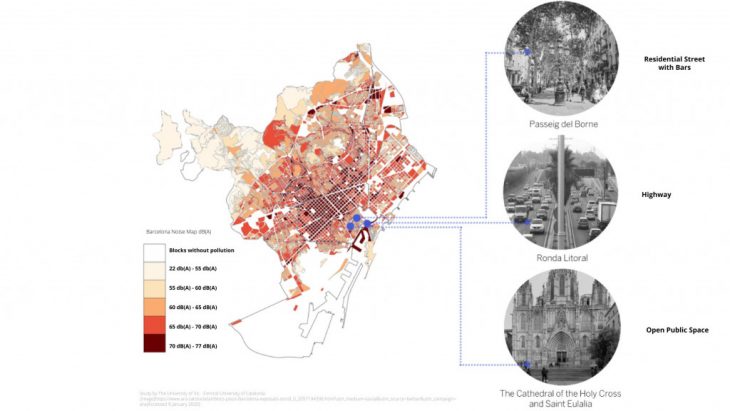
RESEARCH ON SOUND

In order to understand noise pollution and how we can tackle it and design for it, we looked at the fundamentals of sound and how to dampen it. Sound can be altered depending on many factors such as temperature, humidity as well as altitude.
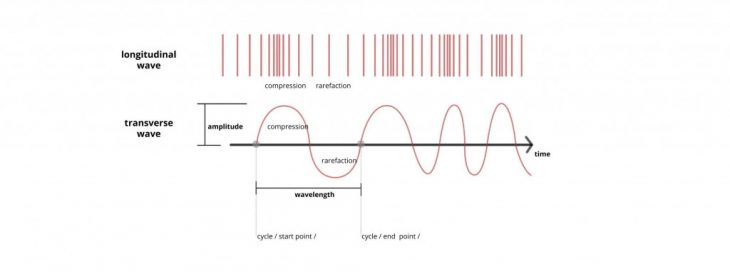
Sound can be measured using either a frequency or decibel spectrum. Frequency refers to the number of vibrations/cycles of sound that occur per second, measured in Hertz. Decibel refers to the strength of these vibrations. The areas of focus for this project were the frequency ranges of traffic and the human voice (between 200 and 1300 Hertz or 50 to 90 decibels).
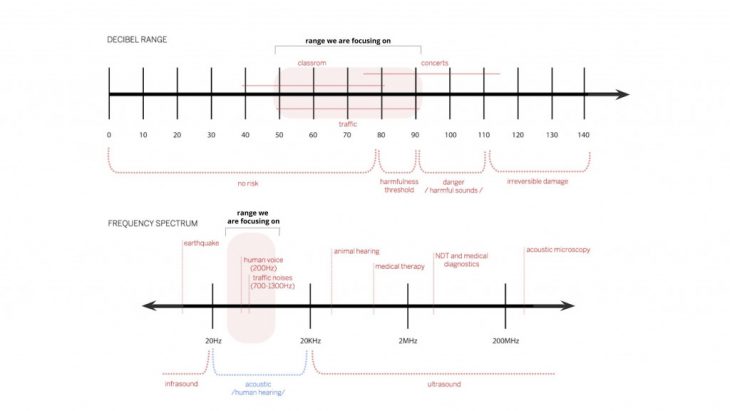
By looking at some State of the Art Noise Dampening Techniques and Systems, we could understand what has been done in different cases to dampen or eliminate sound. Things such as noise barriers, rocket launch pads that spray high-powered water jets, vegetation and Shroeder’s Diffuser were all analysed and informative for the progression of the project.
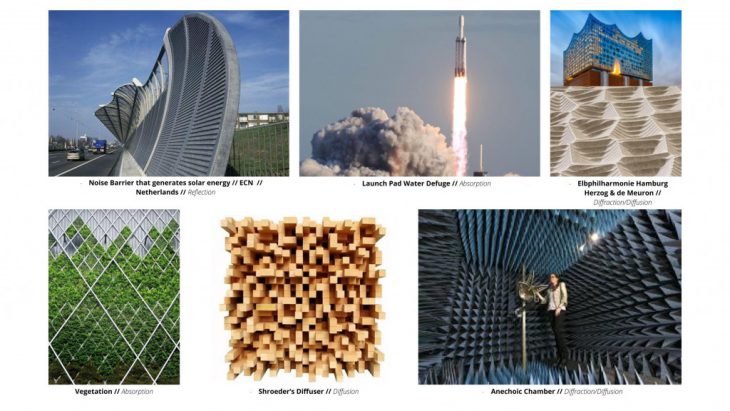
Noise Barriers are exterior structures designed to protect inhabitants from noise pollution caused by major traffic. Noise barriers are the most effective method of mitigating roadway, railway, and industrial noise sources at the moment. Several different materials may be used for sound barriers such as masonry, earthwork, steel, concrete, wood, plastics, or composites. Walls that are made of hard materials will mitigate and reflect the sound very differently to soft or absorptive materials. The noise will be reflected back towards the noise source and beyond.
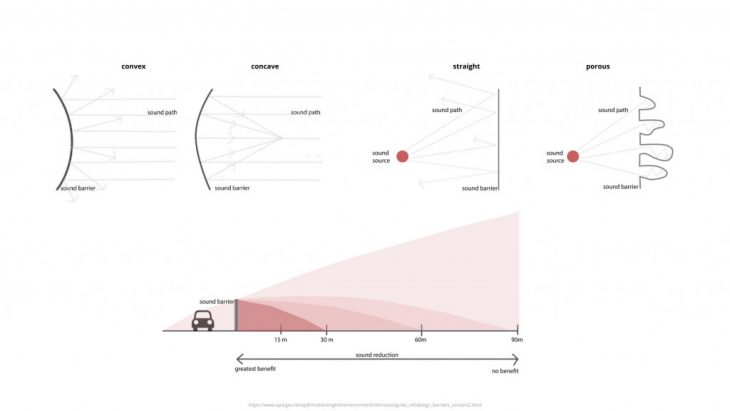
MATERIALS

In order to comprehend how sound can be dampened, we looked into understanding the physics of sound waves. We looked at how sound waves are affected when they come into contact with an object, structure or material. The three fundamentals of sound dampening are the reflection, absorption and transmission of sound. The complexity of the material texture may cause a sound to reflect more diffusely. The higher the porosity the better the material absorption.
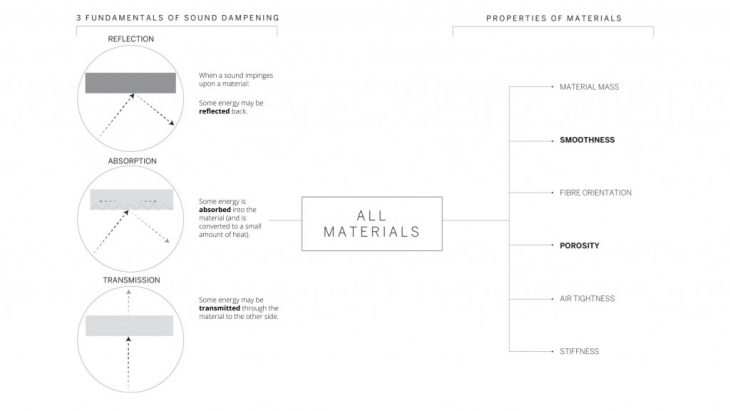
The two materials that were chosen for this project based on their high porosity and therefore high sound absorption coefficients, are Cork and Moss. Porous materials are the most common type of acoustically absorptive materials. With porous materials, sound absorption occurs due to the interconnected pores creating viscous effects that cause energy to be dissipated as heat. The higher the porosity, the higher the absorptivity.
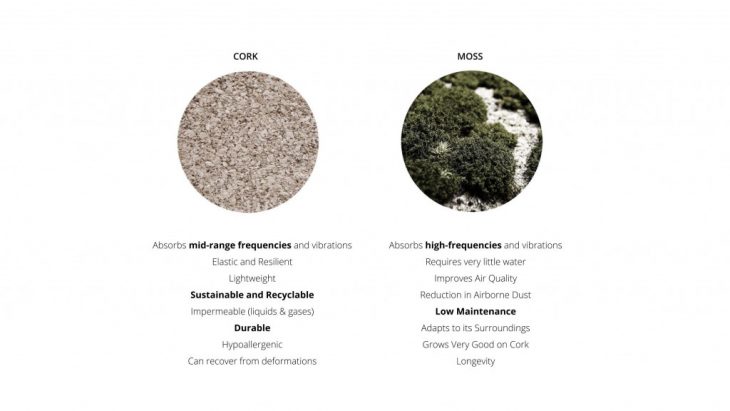
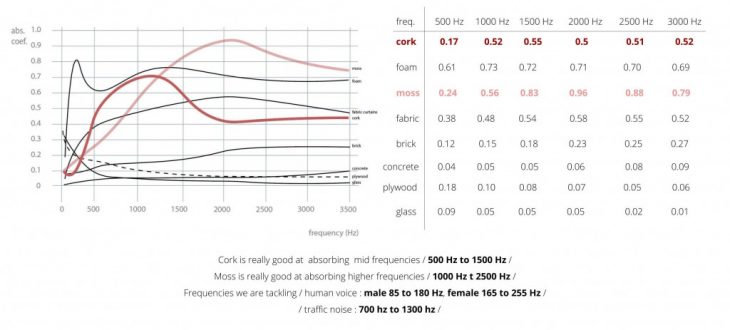
Cork is getting used more and more on an architectural scale on the facade of buildings because of its insulating and acoustic properties, durability, sustainability, and ability to be fabricated easily. Moss panels are increasingly growing in popularity in office spaces in order to reduce noise and promote green spaces in the working environment.
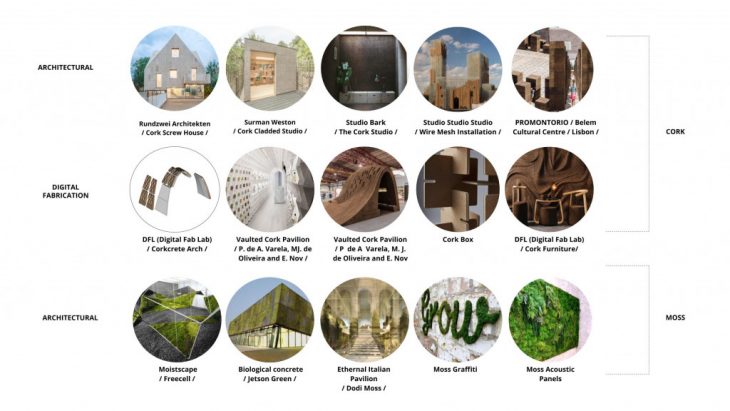
Types of moss that could be used in Barcelona based on their growing conditions:
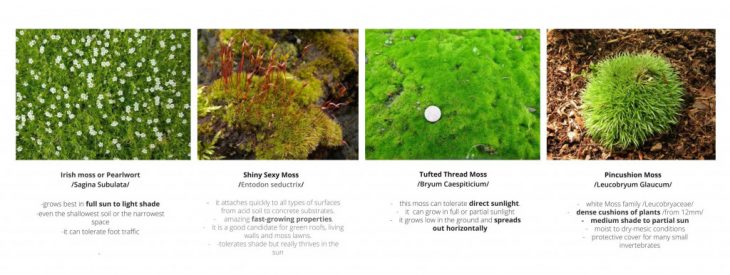
Advantages of having green spaces:
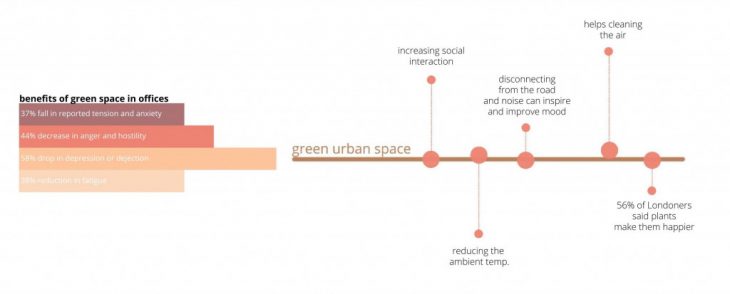
Porous absorbers fall into three categories according to their porous micro-structure: cellular, fibrous and granular. Granular materials create air pockets between tiny grains that are packed together – natural examples include gravel, soil and snow.

Moving from a micro-scale to a macro-scale of the material to the design. The concept of porosity to dampen sound was explored on a larger scale in order to inform the design of the intervention. Granular or Aggregated Architecture was chosen as a method for the project. This idea is unique in the sense that it has not been explored or tested as a noise reduction technique.
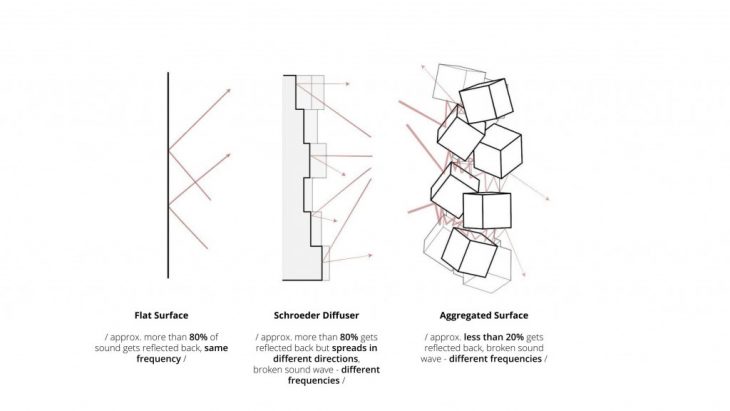
DESIGN CONCEPT // AGGREGATION
State of the Art Granular/Aggregate Construction where the scale, unit size, unit material, binding agent, and way of fabricating was explored in each case. This ‘loose’ state architecture concept is largely unexplored.
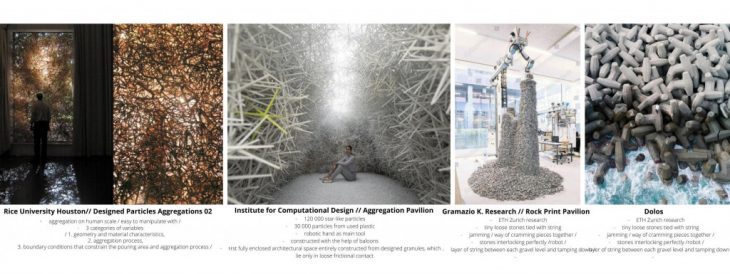
Aggregation is divided into two categories: Deterministic and Stochastic. Deterministic aggregation refers to a structure where the output of the model is fully determined by the parameter values and the initial conditions. Stochastic aggregation structures possess some inherent randomness, where the same set of parameter values and initial conditions will lead to an ensemble of different outputs. The output would ultimately be determined by what parameters we choose to be deterministic and which parameters we choose to be stochastic.
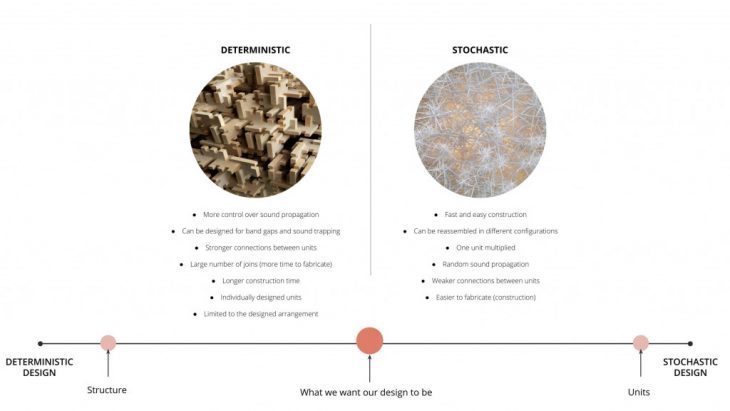
SOUND MATERIAL EXPERIMENTING

In order to determine whether this concept of aggregation as a sound dampening intervention is viable, material fabrication and sound tests were needed. A number of fabrication techniques were considered such as CNC milling, laser cutting and compression moulding. CNC milling was chosen based on the suitability for the thickness of the cork, ability to create textures on the surface of the cork and accessibility to the machines.
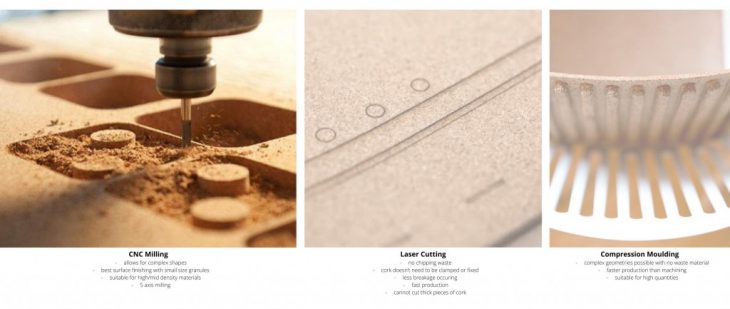
Testing different geometry units in cork:
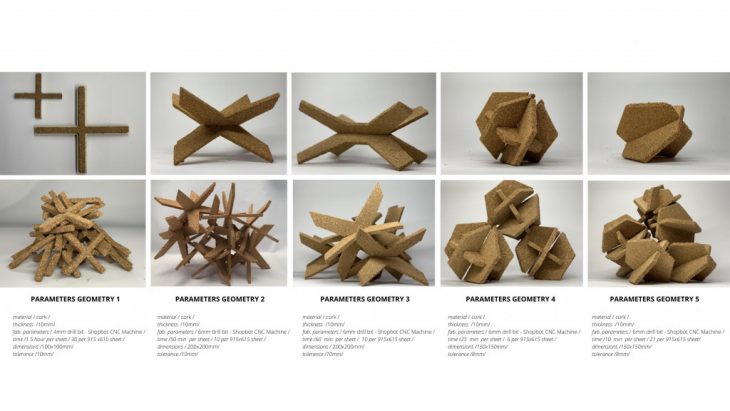
Testing different geometry units in cork and how they aggregate in terms of material usage, volume and porosity spaces created. We found that there needs to be a balance between gaps that are large enough for sound waves to enter and surface area of the cork units to reflect the sound internally around the structure.
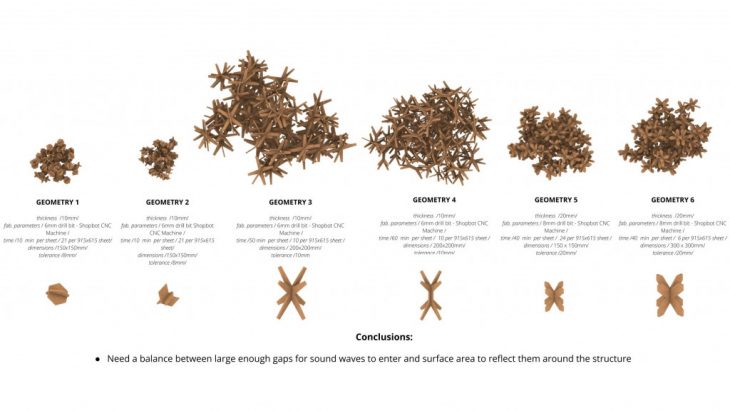
Geometry unit chosen to do sound tests on based on the fabrication and assembly time, aggregation efficiency, and ability to self-stand.

Sound tests were done in order to review whether cork aggregation is a viable option and how it compares to cork panels. Frequencies of 125. 250, 500, 1000 and 2000Hz were tested.
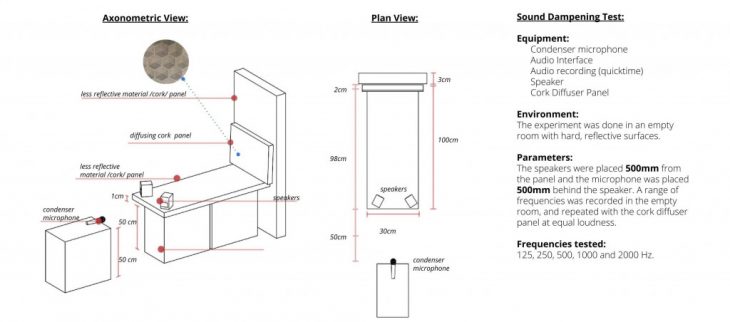
Results between cork units (blue) and cork panel (red). The results show that there is a significant difference in sound diffusion between the panel and aggregated units, especially at higher frequencies.
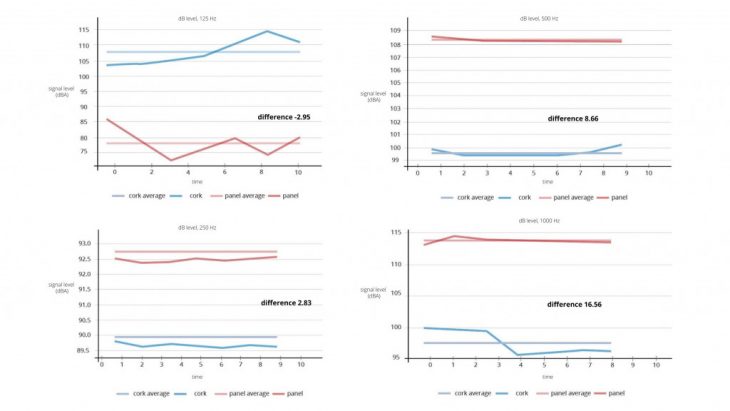
Further sound tests were done between cork aggregated units and cork aggregated units with moss. The same frequencies were tested.
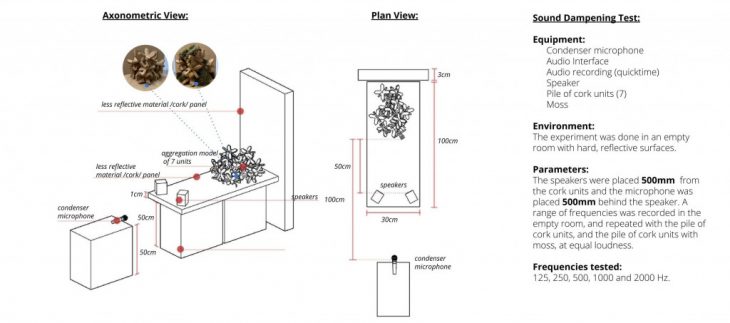
Results between cork units (red) and cork units with moss (blue). The results show that there is a significant difference in sound diffusion between the aggregated units with moss and aggregated units. Thus showing that aggregated cork units with moss will be efficient for sound dampening.
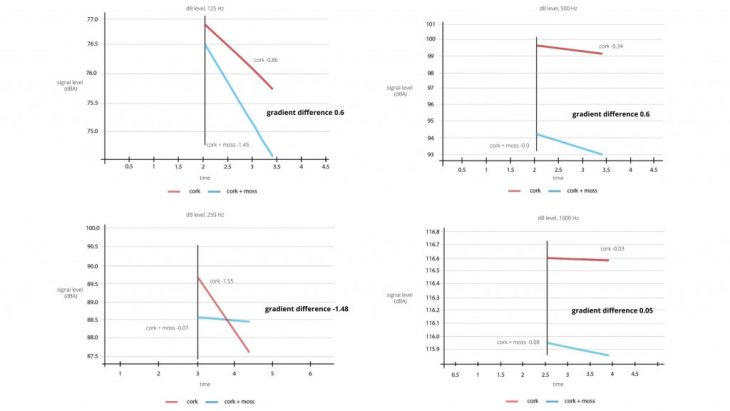
Further computational sound tests were set up to visually represent sound and how it responds. This simulation shows the comparison between a cork panel and cork aggregation, with the aggregation absorbing 90% of the sound energy and reducing the sound level by 10dB.
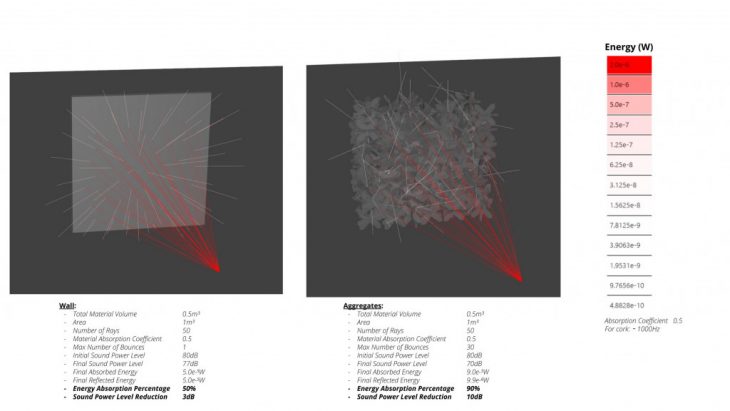
INTERVENTION

Designing an aggregated structure for an urban scale would require an efficient fabrication system to be put in place. We proposed that these units could be aggregated through the process of dropping. The dropping could be done by people, robotic arms or drones. We would be able to prefabricate these units and create multiple ‘unit of units’ and then transport these to site. This would reduce construction time at the site and allow for specific parameters to stay the same.
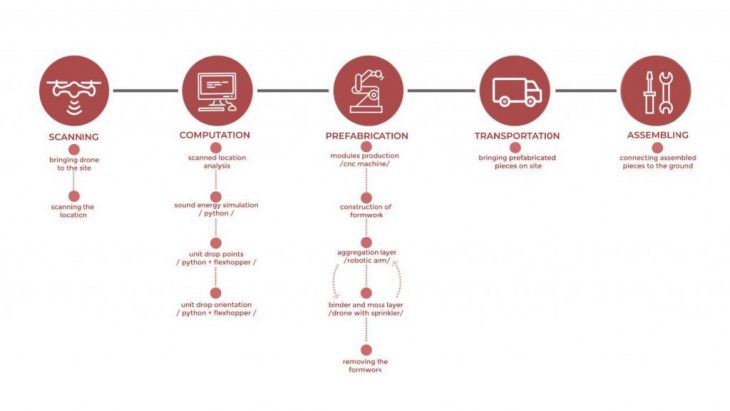
By using drones or robotic arms, we could create a feedback loop that would generate an efficient system for dropping these units. A computational simulation was created to show this system:
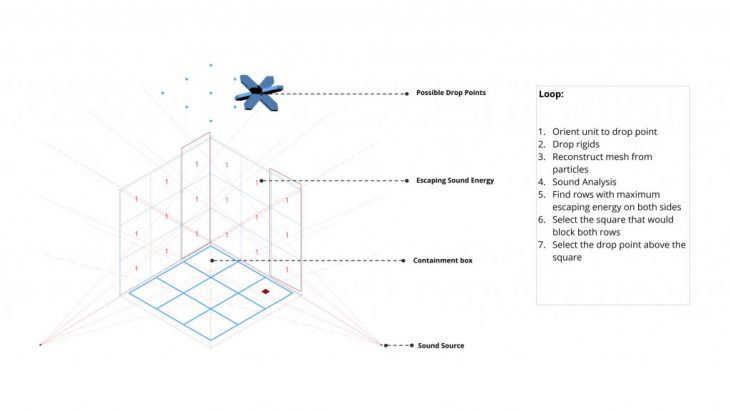
Computational simulations were created to see what the most efficient way to drop these units would be. A system was explored where ‘formwork’ was used to contain the units and then removed once the aggregation was made.

In order to keep these units together in the desired shape, an additional binder could be used. The binder would act as a strengthening agent between the units as well as a base for moss to grow on. The binders that were explored and chosen are shown below:
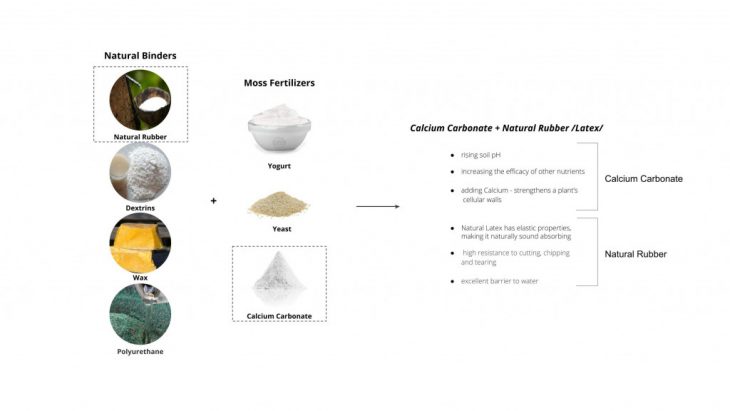
The system of fabrication and construction of these ‘unit of units’:
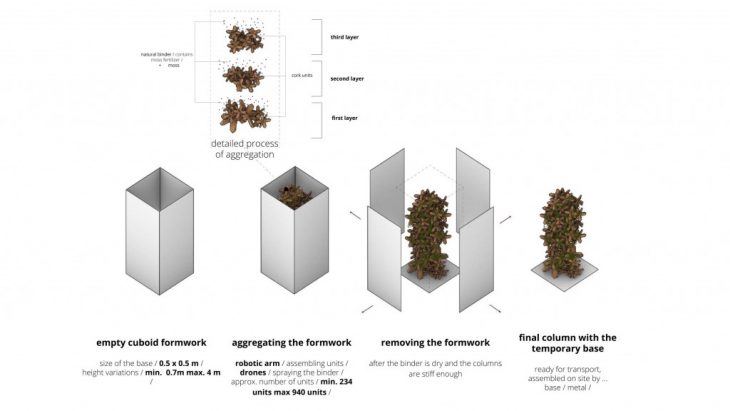
Final ‘unit of units’ and its benefits:
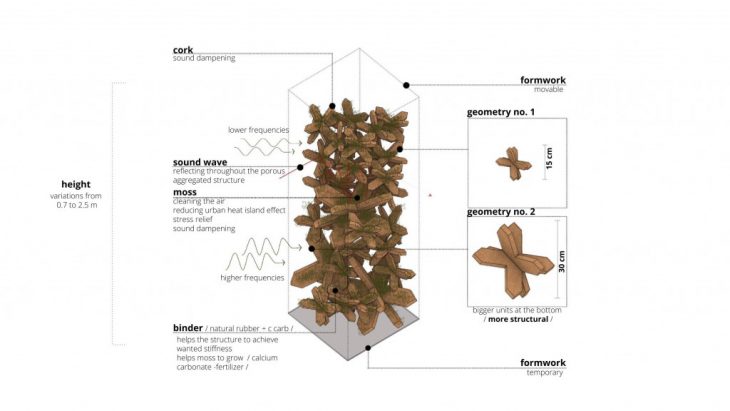
A Strategic Noise Map of Avenue de la Catedral in Barcelona for daytime, evening and night-time noise levels. We proposed an interactive, large scale urban intervention that could change the texture/urban fabric and ultimately whole experience of the space. This intervention would create a quiet space filled with aggregated cork columns of different heights and sizes that could be walked through.
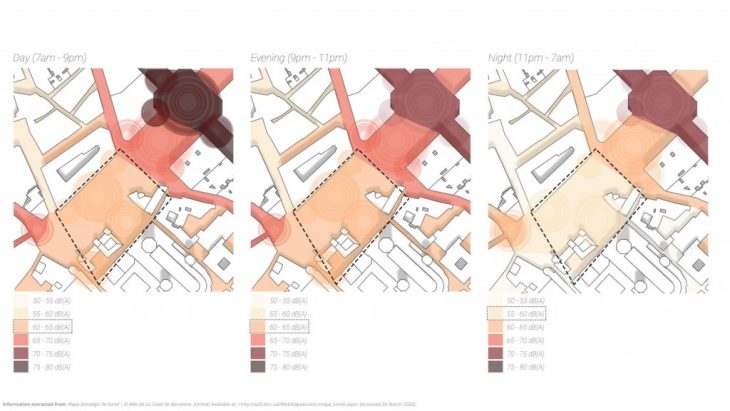
Noise analysis informed design process:
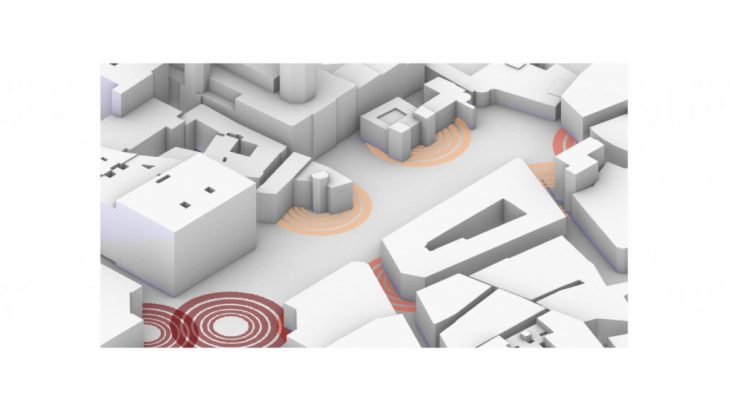
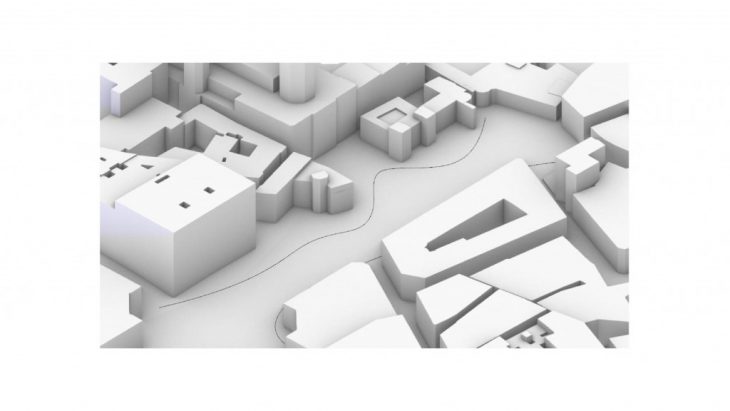
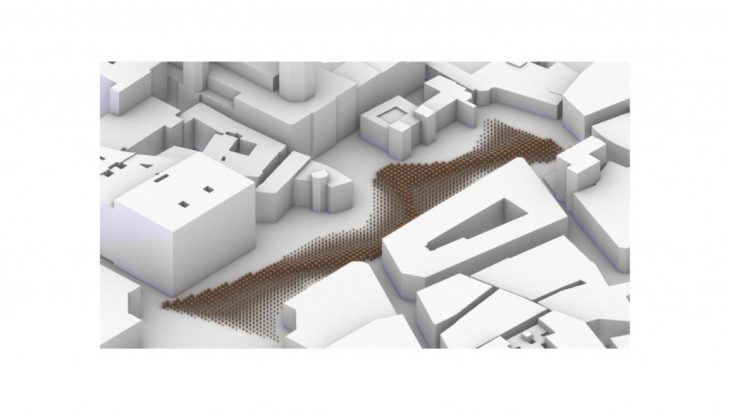
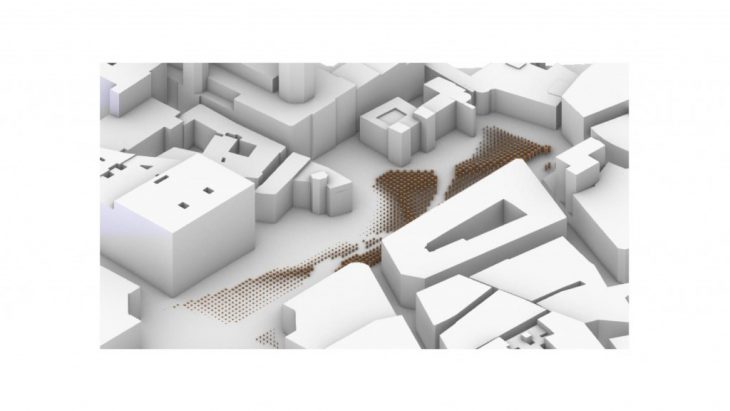
Plan iterations:
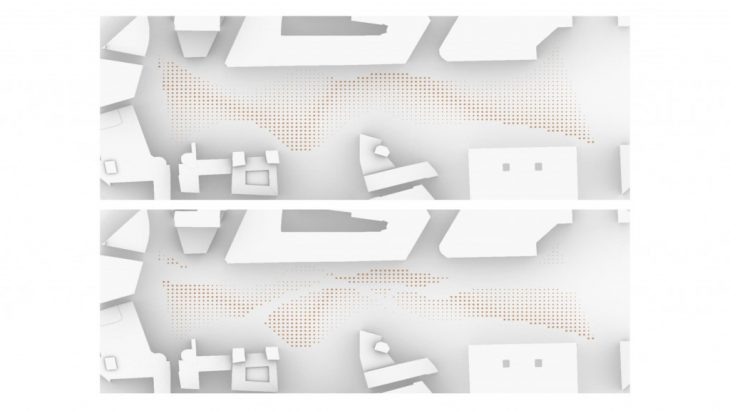
Render 1: Cathedral Location / Public Square
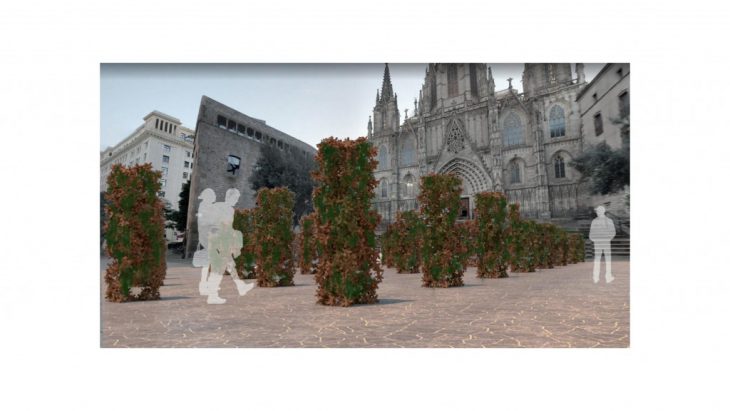
Render 2: Cathedral Location / Public Square

VIDEO
Quiet City is a project of IAAC, Institute for Advanced Architecture of Catalonia
developed in the Master in Advanced Architecture 2019/20 by:
Students: Ines Cavar, Matin Darabi, Hanna Lepperød, Ilaena Mariam Napier
Faculty: Areti Markopoulou, Raimund Krenmueller, David Andres Leon, Nikol Kirova


